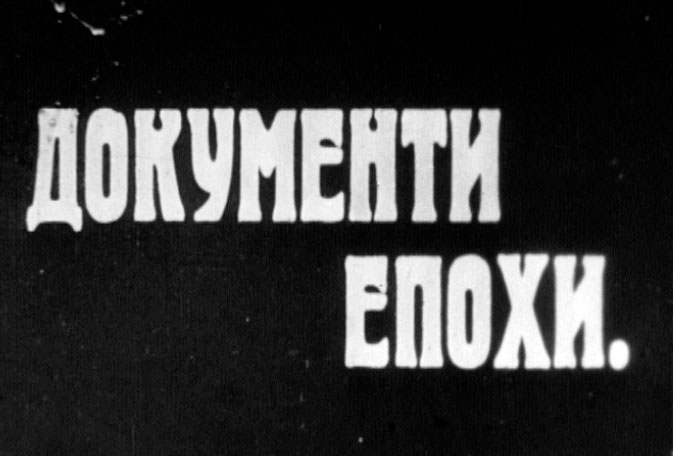+ FOUND +

Documents of the Era
How It Was
1928, First Film Studio VUFKU (Odesa), 67 min
Documents of the Era is the most famous VUFKU’s mashup film which combined some rare newsreels of the history of Ukraine from World War I to the end of the 1920s. Although the newsreels were filtered through ideologically charged intertitles, the film Documents of the Era remains an extremely valuable visual evidence of the most dramatic events in the history of Ukraine of the 20th century.
In 1927, an order of the People’s Commissariat for Education of the USSR is issued to make a compilation film to the anniversary of the October Revolution. Leonid Mohylevskyi, a 28-year-old head of VUFKU Newsreel Department, a promoter of kulturfilms and amateur films, becomes an initiator and performer of this project.
During 15 days, using old newsreels available in VUFKU, he makes a historical compilation named How It Was. The film is released in Ukraine before the October festivities. On the wave of success, VUFKU gives Mohylevskyi some scanty 450 karbovanets and offers to make an extended version of the film named Pages of the Era.
Mohylevskyi has been working on “a film report depicting the history of the revolutionary movement in Ukraine” for five months. He uses newsreels of the Revolution period revised by Bolsheviks as well as materials of filmmaking communities and cameramen from political departments. He finds unique footage with Tsar Nicholas II and the Provisional Government, Leon Trotsky and Symon Petliura in regional newsreels.
He corresponds with cameramen of the Whites, of the Ukrainian People’s Republic and hetman Skoropadskyi and searches for lost historical episodes Hetman’s Banquet, The Universal Declaration, The White Army’s Entry to Kyiv. He finds newsreels with the Directory’s entry to Kyiv at a Tashkent cameraman.
Having watched more than a hundred hours of newsreels, “some rubbish from VUFKU’s basements and vaults,” Mohylevskyi makes a one-hour film under the final name Documents of the Era.
Eight parts of the film coincide with different stages of the revolutionary and post-revolutionary events: World War I, the February and October Revolutions, the entry of German allies of the Ukrainian People’s Republic to Ukraine, activities of the Ukrainian State under Pavlo Skoropadskyi, the return of the Directory to Kyiv, the establishment of Soviet power in Kharkiv and Odesa, Lenin’s funeral, the beginning of the restoration of Soviet Ukraine in the 1920s, the construction of Kharkiv Derzhprom and Dniprohes, celebration of the tenth anniversary of the Revolution, and the panorama of the anti-communist struggle in the world.
Documents are unique due to some rare footage with the activists of the Ukrainian revolution: Hermann von Eichhorn, the supreme commander of the German troops, walks along Kyiv railway station shortly before his assassination, hetman Pavlo Skoropadsky sets a generous table for his allies, Volodymyr Vynnychenko and Symon Petliura freeze in the January frost near the St. Sophia’s Cathedral, Mikhail Muravyov’s units pass through Kyiv, Christian Rakovsky greets the Red Army soldiers in Kharkiv, the People’s Commissar for Education and the proponent of Ukrainisation of the 1920s Mykola Skrypnyk speaks from a rostrum.
In 1927, when the memory of the Ukrainian People’s Republic was still strong, the activities of the leaders of the Ukrainian national revolution were not suppressed, although distorted, and in some cases they were even appropriated by the Bolsheviks.
Intertitles (and the films has more than two hundred of them) play a significant role in manipulating newsreels in favour of the Bolshevik historiography. For the most part, they construct the Bolshevik version of the historical events of the 1910-1920s, where the October Revolution serves as a reference point in history and is driven by the class struggle led by the Red Commanders.
It is the intertitles that actively interpret the video in favour of the Bolshevik historical canon (Petliura is accused of Anti-Jewish pogroms; organisation of the Anti-German partisan struggle of 1918 is attributed to Bolsheviks, and not to the Directory).
The film is stored at the Central State CinePhotoPhono Archives of Ukraine named after H. Pshenychnyi.